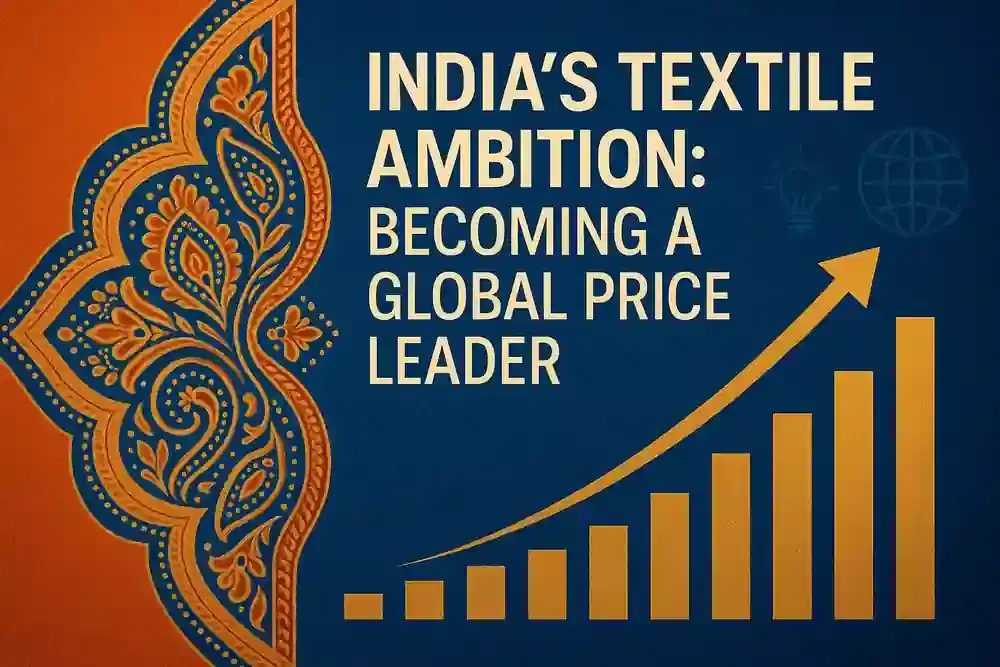India Gears Up to Boost Textile Competitiveness with Global Cost Roadmap
Textile
|
28th October 2025, 7:37 PM

▶
Short Description :
Detailed Coverage :
India is developing a comprehensive cost strategy for its textile industry to regain global price competitiveness, a crucial step as it lags behind competitors such as Bangladesh, Vietnam, and China. This multi-phase roadmap will include short-term (two-year), medium-term (five-year), and long-term plans, focusing on scrutinizing costs related to raw materials, compliance, and taxation. The sector currently faces disadvantages due to expensive raw materials, high logistics, and energy expenses. The primary objective is to benchmark India's production costs against key global rivals and implement measures to reduce manufacturing and export expenses, while minimizing wastage. The ambitious goal is to elevate India's textile exports to $100 billion by 2030, significantly increasing from the current level of around $40 billion.
Competitors like Bangladesh and Vietnam benefit from higher labour productivity, more flexible labour laws, and preferential access, including duty-free raw materials and market access to Europe and China. India's labour productivity is reportedly 20-40% lower than these rivals. To counter this, the textile ministry plans to enhance research and development in areas like fibres, technical textiles, and sustainable materials, and promote digital traceability. It will also support start-ups and design houses focused on new-age textiles through innovation integration.
Measures such as removing Quality Control Orders, rationalizing labour laws, and pursuing free trade agreements with Europe are seen as key to cost reduction. The Economic Survey FY25 has also highlighted that costs are likely to rise due to a global shift towards sustainable sourcing.
Impact: This strategic initiative is highly important for the Indian textile sector. A successful roadmap could lead to a significant boost in exports, enhanced profitability for domestic companies, and a stronger global market share. This could positively influence the stock performance of companies in the textile and apparel value chain. Rating: 9/10
Explanation of Difficult Terms: Labour productivity: The efficiency of workers, measured by output produced per hour or per worker. Higher productivity means lower costs per unit. Benchmarking: Comparing business performance against industry best practices or competitors. Compliances: Adhering to rules, regulations, and standards set by authorities. Duty-free access: The ability to import goods without paying customs duties or taxes. Technical textiles: Textiles engineered for specific functional performance in industries like automotive, healthcare, or construction. Digital traceability: Using technology to track products and materials throughout the supply chain for transparency. Incubation of start-ups: Supporting new businesses with resources to help them grow. Quality Control Orders (QCOs): Government regulations mandating specific product quality standards. Labour law rationalisation: Simplifying or reforming laws related to employment to improve efficiency. Free trade agreement (FTA): An international pact between countries to reduce trade barriers. Sustainable sourcing: Procuring materials from suppliers who follow environmentally and socially responsible practices.